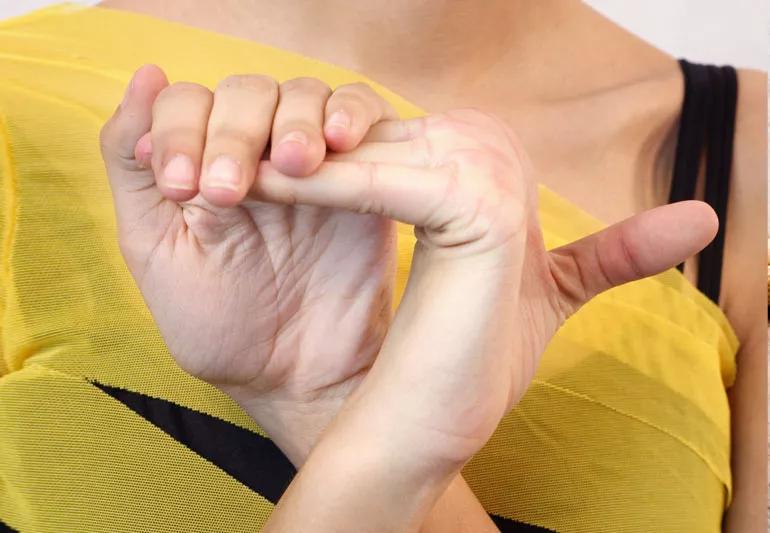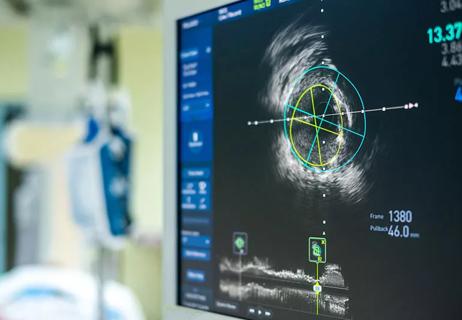Plus, when to see a doctor about it

Growing up, were you that kid at the party who could twist your body into a pretzel or bend your fingers all the way backward?
Advertisement
Cleveland Clinic is a non-profit academic medical center. Advertising on our site helps support our mission. We do not endorse non-Cleveland Clinic products or services. Policy
Hyperextending a limb may feel normal to you — and most of the time, if you’re so-called “double-jointed,” it’s not harmful to your body. But rarely, it can be a red flag for other health conditions.
In reality, there’s no such thing as being double-jointed. (Wait, what?) The term implies that you have two joints where there should be one, which isn’t possible, says orthopaedic surgeon Michael Star, MD.
What people think of as double-jointedness is actually hypermobility, or joints that can move beyond the typical range.
Your joints are made up of connective tissue and a protein called collagen. If connective tissue is a building, collagen is the bricks. Hypermobility results from the variation in how those bricks come together.
And you don’t have to be a contortionist to be considered hypermobile. “Everybody has a different level of flexibility. For example, dancers and gymnasts can bend over backward — and then there’s me, who can’t even touch the floor,” Dr. Star relates.
“It’s all on the mobility spectrum. Hypermobility is just at one end of it. Dancers and gymnasts don’t have a disease. They’re simply more flexible.”
About 20% of people are hypermobile. Some of them are also at increased risk for shoulder and knee dislocations. But unless hypermobility coincides with significant pain or recurring injuries, there’s usually nothing to worry about.
Advertisement
“Doctors will likely recommend physical therapy, activity modification and strengthening exercises,” Dr. Star says. “These activities give much-needed stability to the joint.”
Ehlers-Danlos syndrome is a group of rare genetic disorders. Because EDS affects connective tissue, it is closely linked with hypermobility.
The most common type of EDS is hypermobile Ehlers-Danlos syndrome. Its most common symptom is — you guessed it — extremely flexible joints. Another sign is skin that is stretchy and doesn’t heal well.
While there is no cure for hypermobile Ehlers-Danlos syndrome, there are ways to effectively manage it. If you suspect you or your child has EDS, a doctor can recommend lifestyle changes and treatments that can help.
Advertisement
Learn more about our editorial process.
Advertisement

Most recommended precautions center around minimizing bruising or swelling

Even one drink can have an impact on your cognitive function leading to slurred speech, blurred vision and impaired memory

Understand who may (and may not) benefit

Lorem ipsum dolor sit amet. Et odio Quis vel ipsam omnis eum alias deleniti et placeat impedit non voluptas galisum hic autem enim et cupiditate aliquid. Est beatae quidem non facilis autem ut commodi nisi aut tempore rerum et dolores voluptatem cum enim optio id sapiente quasi. Ad laboriosam officiis 33 cupiditate sequi ea voluptatum consectetur qui necessitatibus voluptate et quasi doloremque et facere explicabo quo explicabo officia

Seeking help through therapy can be an important step in improving your quality of life when you have UC

Type 2 diabetes isn’t inevitable with these dietary changes

Applying a hot or cold compress can help with pain